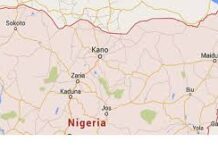Understanding how technology saved America
By Francis Ogbimi
TECHDIGEST – Nigeria’s performance as a nation since independence is shameful. The federal and state governments have always been borrowing carelessly to erect infrastructure and deceiving the ignorant citizenry that government is committed to developing the nation.
This article is written to educate the citizenry that the United States did not just award inflated contracts for erecting poorly constructed infrastructures to achieve greatness. The United States of America was a village-nation in 1800, but acquiring science and technology, S&T, rapidly saved it from disintegration and made it a world economic/political power in about 100 years later.
Following the discovery of America by Columbus in 1492, the discovery of gold and silver in the New World, America was considered a land of wealth and great opportunities. The lure of big profits, political loyalty and the search for better life and liberty induced individuals, the King of England and settlers themselves to found colonies in America (Baldwin, 1969).
Lasting English colonisation began when a group of English merchants and investors applied for royal charter to authorise enterprise in the New World (Americas). King James issued a single charter to them as the Virginia Company in 1606. Their settlements were to be governed by a royal appointed Council of Virginia sitting in London.
Over a period of more than 150 years later,
Englishmen, Frenchmen, Germans, Scots, Irishmen, Dutch, Swedes and Africans, willingly and through force, took their habits and traditions to the New World. The result was a new social pattern which, although resembled European society in many ways, had a character that was distinctly American (Whitney and Glick, 1965).
The original 13 colonies: Virginia, New York, Connecticut, Pennsylvania, Massachusetts, Rhodes Island, Maryland, New Jersey, North Carolina, South Carolina, Vermont, New Hampshire and Delaware, formed a confederation and declared independence from Britain on July 4, 1776. The Confederation, assisted by France, Spain, Netherlands and other European nations, fought and won the War of Independence with Britain between 1775 and 1783.
The belief that the future of America rests on sound public education was common among early American leaders, though they themselves did not have opportunities for good education(Hicks, et al., 1970).
They were honest leaders so God gave them wisdom. Consequently, Americans displayed fully the versatility of an educated people. The New England States were the first to establish public schools to educate all young people (Bartlett, et al., 1969).
It was also in these states that sound and systematic education had been practised longest and where it was most developed that the greatest manufacturing development occurred first. The young boy’s mind was first prepared by school discipline and education.
He then began to acquire one type of skill after the other, never satisfied with any single skill type. Also, doing one mechanical operation never satisfied his employer. The young American learnt always at that time (Bartlett et al., 1969).
After the Revolutionary War (1775-1783) in which America became independent of Britain, the Americans wrote the popular American Constitution, adopted it in 1789 and transformed the confederation into the American federation.
Britain was clearly more technologically advanced at that time. But America did not award big contracts to Britain or Britons to erect complex infrastructure for America so that America can achieve effortless development overnight.
Morrison (1974) narrated the American experience in developing infrastructure in the 18th century. By 1790, there were many thriving communities in south New England. It soon became clear that roads wide enough for a yoke of oxen and forest trails for men on foot were insufficient means for the kind of transport such an expanding territory required.
It was also apparent that the solution to this problem did not lie in building a network of roads to tie the various parts of the region together. This, the Americans believed, would cost a great deal to build and present a continuing difficulty of maintenance. So, a search was made for a reasonable alternative.
New Englanders turned in time to watercourses that existed. From Boston, there arose a plan to connect rivers by short canals to create an extended transport system. These were the dreams in the minds of many men by 1790 when no single canal had been built in the United States of America.
The General Court of the State of Massachusetts in 1793 gave a group of private citizens the right to form the Middlesex Canal Company and to build a canal between Boston and Lowell, a distance of 26 miles(40kms).
These men chose Laomi Baldwin, a sometimes-cabinetmaker, an occasional surveyor of boundaries as “man of learning” to direct the construction of the canal. The distinguishing citation of “man of learning” arose from the fact that he and his friend had walked from a distance to attend lectures in mathematics and physics at Harvard.
Baldwin in the summer of 1793 assembled the tools available for the project. For clearing and digging: axe, hoe, shovels, mattocks, crow bars, scythes, pitchforks. For working wood: saws, fore planes, halving planes, drawshaves, chisels, hold fasts. For working metal: forges, vises, anvils, tongs, files, chisels, hammers. For working stone: drills, chisels, wedges, priming wires.
Note the tools gathered. In practical terms, Nigeria is scientifically and technologically centuries more backward today than the United States of America, USA, of 1793. Baldwin as the superintendent also gathered a work force – men known to be good at building stone walls or farming barns, handy men in the local towns, and most of all farmers who had learnt to build and repair the things they needed for work or living.
By the end of the summer, Baldwin had collected the best tools and the most skilled work force available in the USA to undertake the needed venture.
It was then discovered that the men who had learned how to take care of themselves and who, working within a general architectural scheme had neither the wherewithal nor the knowledge nor the skills even to begin to build a canal. The place to begin was to run precise surveys and levels.
Finding no American who knew more than them, they sensibly waived the requirements of morals and steadfastness and looked to foreigners for help. In time they found two men from Europe who helped them to start. Years of difficulties continued long after the Europeans left. The canal was completed in 1800. It took eight years to complete.
By focusing on intensive education and training and trying to solve their problems themselves and learn in the process – invest in growing investment functions and Appreciating Assets, AAs, the Americans developed technological capabilities rapid. When the American Civil War 1861-1865 began, the more technologically developed North defeated the farming South and united the nation.
America achieved the modern Industrial Revolution in the period 1850-1900 (Bartlett, et al., 1969). Technology built America and disproved Frederick the Great of Russia, who had predicted that America was a temporary freak – it was too large – it would fall apart. By 1914 when World War I (1914-1918) started, America had become a world power.
















